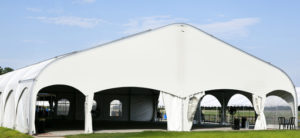If you work in almost any retail or service-based field, you have likely heard about trade shows and the growth that they can bring to businesses. However, you may not know what their purpose is or how they can help you reach more clients in your given industry. However, the importance of trade shows, especially to small businesses, cannot be understated. They benefit you both from the ability to gain new customers and from the ability to make connections within the industry.
In fact, the trade show industry is a booming market, spawning offshoots and vendors, such as trade show exhibit rentals, trade show marketing support systems, even trade show models. It is one of the biggest business marketing service industries. So what goes into a trade show and what is its purpose?
A trade show is effectively any large show where multiple companies come together to show what they can do and what they sell. Each company is given a booth that they can put anything they want in, allowing them to demonstrate their product or services. Most trade shows allow you to use things like televisions, live demonstrations, internet connected computers, and even photography booths. The booth is the first place that customers will see each company and is where they will be able to form their first impressions of any company that they haven’t seen before.
Most of the time shows will be themed around either a single product or a single industry. This can be anything from computer software to a much broader theme such as home improvement or even entire industries such as shipping, food and drink, or bridal. Most of the time these shows focus on the actual trades themselves, and less on the finished product. Things like manufacturing processes, types of materials that are being used, industry standards for certain installations, and even new styles for home improvement can be seen.
On the other side, companies who have something to offer to people within these trades, such as new materials, tools that are intended to speed up certain processes, upgrade options that can be customized for different companies, and even shipping options that will save them money can also be represented. Sometimes these options are a bit more physical product oriented, meaning that they will give away samples to people who visit their booths or that they will be selling their full-sized product at the show. These companies are usually looking to not only sell individual units or packages, but to make contact with companies that need long term relationships or whole company upgrades.
If you haven’t guessed by now, trade shows tend to be places where contracts are made, large amounts of money changes hands, and where enterprising companies can find enough work to keep themselves busy for a year or more. They are also places where companies can find out information about each other and see how the standards are changing within their given industry. It isn’t uncommon for one company to come and find out that their competition is offering something new that makes them change their entire business plan. However, it is just as common for companies to come together and discuss options that they would like to see, motivating others within the industry to make changes.
Finally, small companies will often find an audience for their innovative new products at these shows. Because larger companies are usually in attendance, smaller companies can often find people who can either invest in their company or give them feedback on what they have come up with. This is invaluable and will often provide better results than paid focus groups.
Overall, the purpose of trade shows is to make connections within the industry and to ensure that companies are keeping up with each other. A secondary purpose is to introduce the wares and services of companies to new customers in a professional environment.
… There appear to be many excellent benefits when choosing
There appear to be many excellent benefits when choosing  They are the brains behind the company, and can steer the company from slamming into a dangerous iceberg, downing the company, to instead finding smooth sailing and prosperity. That’s a poetic way of saying the Chief Financial Officer is an important member of the team. The people below them are the “doers”, while a CFO works with the executive team to prioritize what will make the company continue to grow and thrive into the future. They also known when to abandon projects and products or services that were not working out so well.
They are the brains behind the company, and can steer the company from slamming into a dangerous iceberg, downing the company, to instead finding smooth sailing and prosperity. That’s a poetic way of saying the Chief Financial Officer is an important member of the team. The people below them are the “doers”, while a CFO works with the executive team to prioritize what will make the company continue to grow and thrive into the future. They also known when to abandon projects and products or services that were not working out so well.
 That seems like a fair assessment, given that in many parts of the world,
That seems like a fair assessment, given that in many parts of the world,